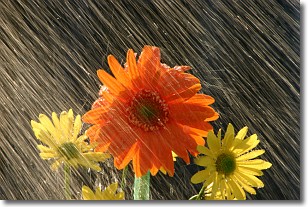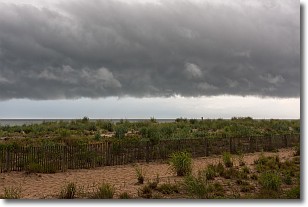Weather Alert in Texas
Flood Watch issued April 25 at 12:50PM CDT until April 26 at 10:00AM CDT by NWS Lubbock TX
AREAS AFFECTED: Parmer; Castro; Swisher; Briscoe; Hall; Childress; Lamb; Hale; Floyd; Motley; Cottle; Hockley; Lubbock; Crosby; Dickens; King; Lynn; Garza; Kent; Stonewall
DESCRIPTION: * WHAT...Flash flooding caused by excessive rainfall is possible. * WHERE...The far southern Texas Panhandle, the Rolling Plains, and a majority of the South Plains region of West Texas. * WHEN...From 5 PM CDT this evening through Saturday morning. * IMPACTS...Excessive runoff may result in flooding of rivers, creeks, streams, and other low-lying and flood-prone locations. Flooding may occur in poor drainage and urban areas. * ADDITIONAL DETAILS... - Multiple rounds of thunderstorms are expected this evening through late tonight. Thunderstorms are expected to move relatively slowly, and will be capable of very high rain rates. This combined with repeated training of storms over the same locations may result in flash flooding.
INSTRUCTION: You should monitor later forecasts and be prepared to take action should Flash Flood Warnings be issued. If you encounter a flooded roadway, turn around, don't drown. Most flood deaths occur in vehicles.
Want more detail? Get the Complete 7 Day and Night Detailed Forecast!
Current U.S. National Radar--Current
The Current National Weather Radar is shown below with a UTC Time (subtract 5 hours from UTC to get Eastern Time).

National Weather Forecast--Current
The Current National Weather Forecast and National Weather Map are shown below.

National Weather Forecast for Tomorrow
Tomorrow National Weather Forecast and Tomorrow National Weather Map are show below.

North America Water Vapor (Moisture)
This map shows recent moisture content over North America. Bright and colored areas show high moisture (ie, clouds); brown indicates very little moisture present; black indicates no moisture.

Weather Topic: What is Precipitation?
Home - Education - Precipitation - Precipitation
 Next Topic: Rain
Next Topic: Rain
Precipitation can refer to many different forms of water that
may fall from clouds. Precipitation occurs after a cloud has become saturated to
the point where its water particles are more dense than the air below the cloud.
In most cases, precipitation will reach the ground, but it is not uncommon for
precipitation to evaporate before it reaches the earth's surface.
When precipitation evaporates before it contacts the ground it is called Virga.
Graupel, hail, sleet, rain, drizzle, and snow are forms of precipitation, but fog
and mist are not considered precipitation because the water vapor which
constitutes them isn't dense enough to fall to the ground.
Next Topic: Rain
Weather Topic: What are Shelf Clouds?
Home - Education - Cloud Types - Shelf Clouds
 Next Topic: Sleet
Next Topic: Sleet
A shelf cloud is similar to a wall cloud, but forms at the front
of a storm cloud, instead of at the rear, where wall clouds form.
A shelf cloud is caused by a series of events set into motion by the advancing
storm; first, cool air settles along the ground where precipitation has just fallen.
As the cool air is brought in, the warmer air is displaced, and rises above it,
because it is less dense. When the warmer air reaches the bottom of the storm cloud,
it begins to cool again, and the resulting condensation is a visible shelf cloud.
Next Topic: Sleet
Current conditions powered by WeatherAPI.com




